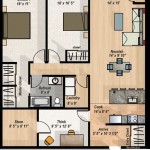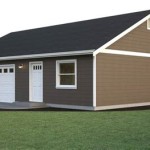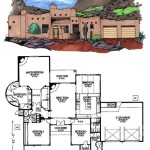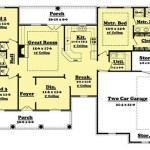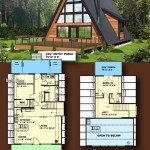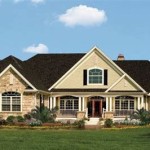Passive Solar Design House Plans
Passive solar design is a building design approach that harnesses the natural energy of the sun to heat and cool a home, reducing the need for conventional energy sources like fossil fuels. Passive solar house plans incorporate specific design principles that maximize solar gain while minimizing heat loss, creating energy-efficient and comfortable living spaces.
Benefits of Passive Solar Design
Implementing passive solar design in house plans offers numerous advantages:
- Reduced energy costs: Passive solar strategies minimize the need for heating and cooling systems, resulting in significant savings on energy bills.
- Improved comfort: Passive solar design ensures comfortable indoor temperatures year-round, eliminating cold spots and drafts.
- Environmental sustainability: By relying on renewable energy sources, passive solar homes reduce carbon emissions and environmental impact.
- Increased property value: Energy-efficient homes with passive solar features are highly desirable in the real estate market, commanding higher prices.
Key Design Principles
Passive solar design house plans adhere to the following principles:
- South-facing orientation: The majority of the home's windows and openings are positioned on the south side to maximize solar exposure.
- Thermal mass: Building materials with high thermal mass (e.g., concrete, stone) absorb and store heat during the day, releasing it at night to maintain comfortable indoor temperatures.
- Overhangs and shading: Overhangs and other shading devices protect windows and openings from overheating during the summer months.
- Ventilation and airflow: Passive solar homes utilize natural ventilation to circulate warm air throughout the house, reducing the need for air conditioning.
- Insulation and airtightness: Adequate insulation and airtight construction minimize heat loss and improve energy efficiency.
Types of Passive Solar House Plans
There are several types of passive solar house plans available:
- Direct gain: Solar energy is directly absorbed into the home through south-facing windows and stored in thermal mass.
- Indirect gain: Solar energy enters through south-facing windows and is stored in an insulated thermal storage element (e.g., Trombe wall).
- Isolated gain: Solar energy is collected in a separate collector and then distributed throughout the house using air or water ducts.
Choosing a Passive Solar House Plan
When choosing a passive solar house plan, consider the following factors:
- Climate: The house plan should be tailored to the specific climate conditions of your region.
- Orientation of the site: The availability of solar exposure will influence the design of the home.
- Budget: Passive solar design can add to the initial construction costs, but the long-term energy savings can offset these expenses.
- Lifestyle: The design should meet the specific needs and preferences of the occupants.
By incorporating passive solar design principles into house plans, homeowners can create energy-efficient, comfortable, and eco-friendly living spaces that reduce energy consumption and environmental impact.

Passive Solar Home In Stoneville Western Coveney Browne Architects

Passive Solar House Plan 2 Bedrms Baths 1418 Sq Ft 146 2710

Passive Solar Home Plan At Alternative Heating Com House Design Homes Plans

Passive Solar House Plans Version 3 Byexample Com

Great Floor Plan For Solar Passive Home In Google Search House Plans Narrow

Passive Solar House Design Ecoliv
What Does A Passive House Cost To Build Leanhaus

Passive Solar House Design

Ranch House Plans For A Passive Solar 1 Bedroom Home

Passive Heating Yourhome

